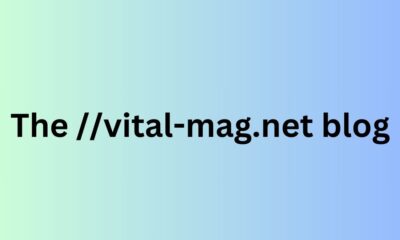GENERAL
The Engine of Empowerment: Efficiency of Estate Planning Fuels Your Ability to Shape Future and Preserve Assets with Precision

What is Estate Planning?
Estate planning involves meticulously organizing one’s estate to ensure that your wishes are adhered to and disputes are minimized or avoided altogether. This process is not solely for the affluent; anyone with assets or personal wishes regarding their property should consider creating an estate plan. Such a plan can reduce family disagreements and help shield your estate from excessive tax burdens. In today’s world, the importance of a sound estate plan is echoed by experts like the Bellevue WA real estate agents Brian Hawkins & Cyrus O’Bryant, who understand the peace of mind it brings to individuals and their families.
Components of an Effective Estate Plan
Several critical elements should be included in constructing a well-rounded estate plan. The primary components are wills, trusts, powers of attorney, and healthcare directives. A will outline asset distribution after death. However, trusts can help you manage your estate while you’re still alive and make transfers easier once you pass away. A living trust, for example, is a popular tool for avoiding probate, maintaining privacy, and enabling faster asset distribution. According to experts, a living trust protects your assets during your lifetime. It provides clear instructions for trustees, ensuring that your intentions are honored without the delays often associated with probate.
The Importance of Professional Guidance
While many people might attempt drafting their estate documents using DIY kits or online templates, the value of seeking professional advice cannot be understated. A professional can ensure that your documents adhere to state laws and address all significant areas, including potential tax implications that could be overlooked. This approach guarantees completeness and is a preventive measure against future legal disputes and complications. The investment in professional guidance is an investment in the security of your estate and peace of mind for your loved ones.
Updating Your Estate Plan Regularly
As life’s circumstances evolve, so should your estate plan. Reviewing and updating your records to reflect important life events like marriage, divorce, having a child, or experiencing big changes in your financial situation is crucial. Reviewing it regularly ensures that your estate plan still represents your current preferences and considers any new family members or adjustments to your financial status. Regular updates help avoid emotional distress and financial setbacks for your heirs when it’s time to execute the plan.
Effective Communication: A Key Element
Communication is a powerful yet often underestimated component of estate planning. Open dialogue with your family members about your estate plan can prevent potential misunderstandings and conflicts. Discussing your plan, intentions, and expectations with your heirs, executors, and trustees is imperative. This transparency ensures everyone involved understands their roles and respects your wishes, ultimately fostering smoother execution of the plan when the time comes. Such discussions can mitigate anxiety and create an atmosphere of trust and clarity among future generations.
Common Mistakes to Avoid in Estate Planning
Certain pitfalls can compromise even the most thoughtfully prepared estate plans. Common mistakes include neglecting to address digital assets such as online accounts, digital currencies, and intellectual properties, all of which can be of significant sentimental or tangible value. Additionally, failing to designate alternate beneficiaries can lead to unforeseen complications. Awareness of these potential errors and proactive measures to address them are essential to crafting a comprehensive estate plan.
-

 BIOGRAPHY5 months ago
BIOGRAPHY5 months agoBehind the Scenes with Sandra Orlow: An Exclusive Interview
-

 HOME12 months ago
HOME12 months agoDiscovering Insights: A Deep Dive into the //vital-mag.net blog
-

 HOME1 year ago
HOME1 year agoSifangds in Action: Real-Life Applications and Success Stories
-

 BIOGRAPHY12 months ago
BIOGRAPHY12 months agoThe Woman Behind the Comedian: Meet Andrew Santino Wife




























